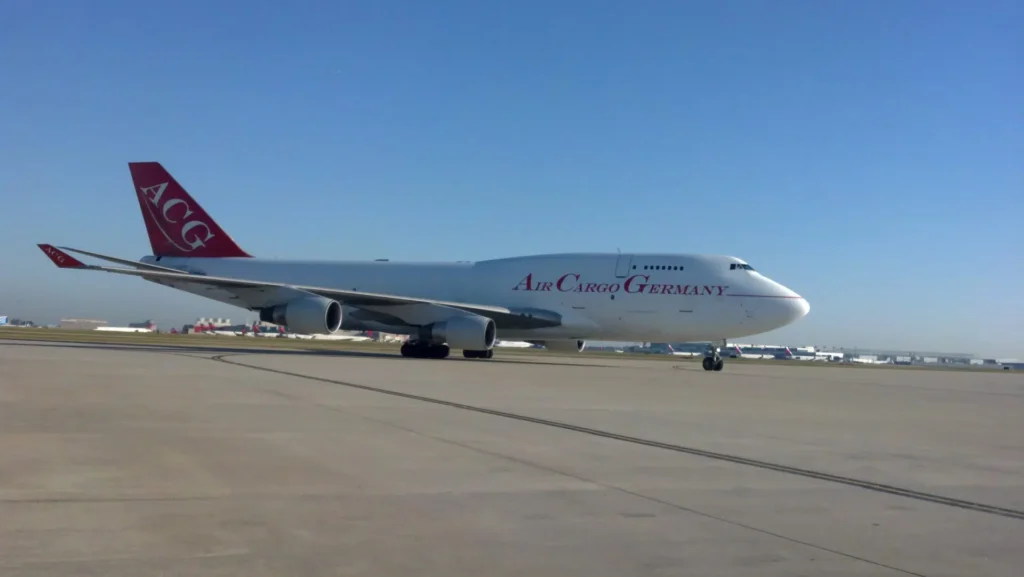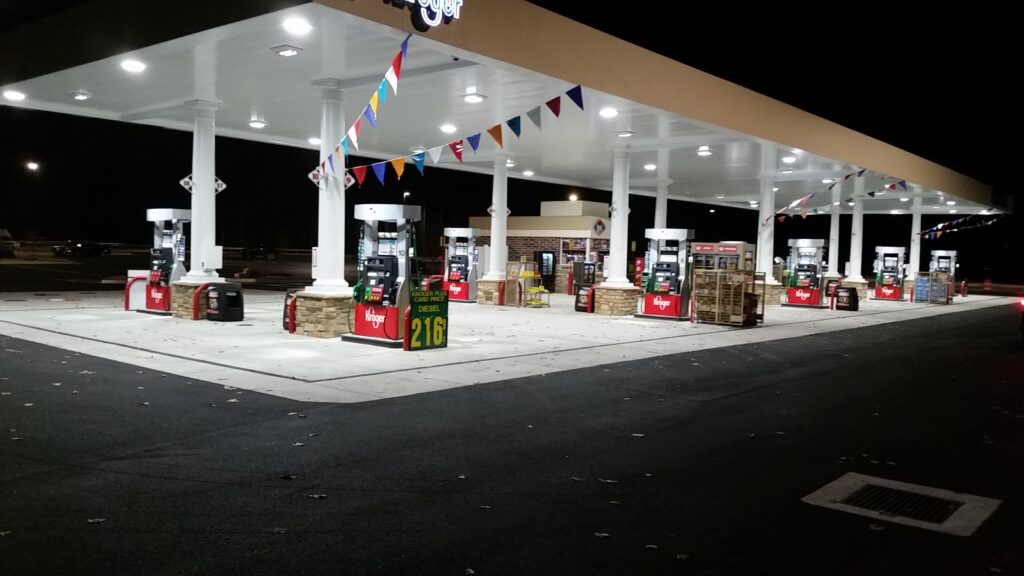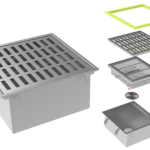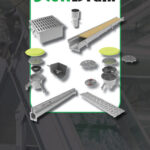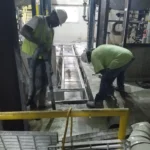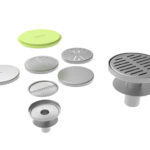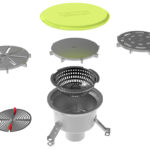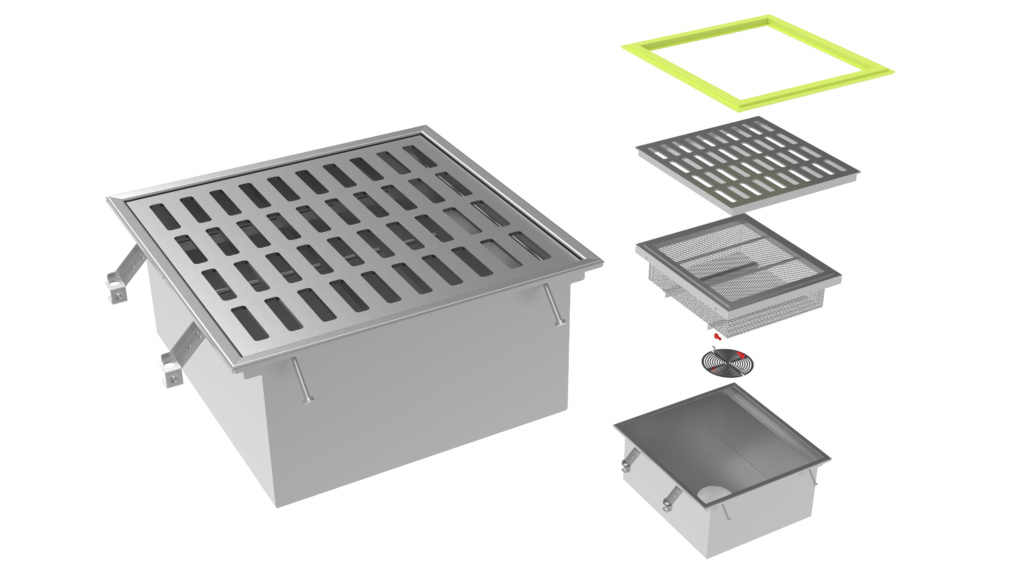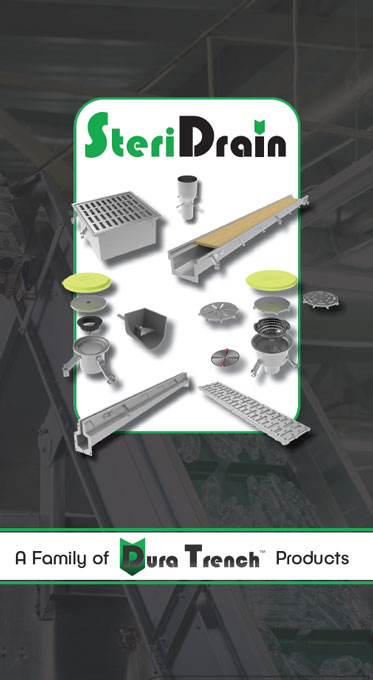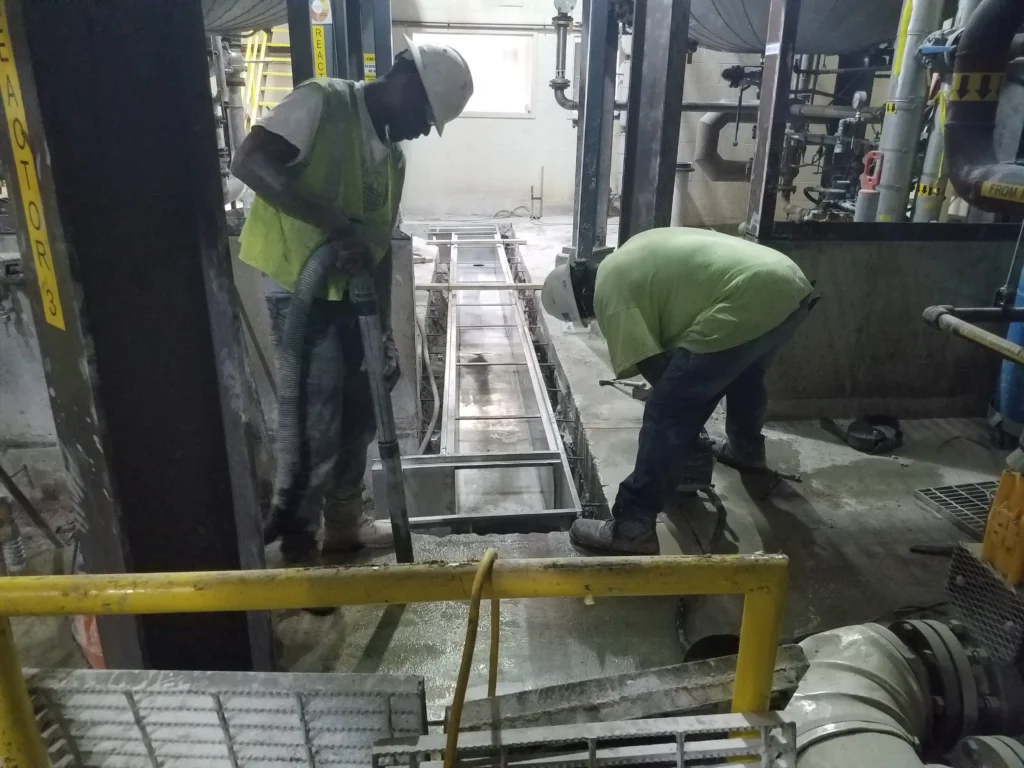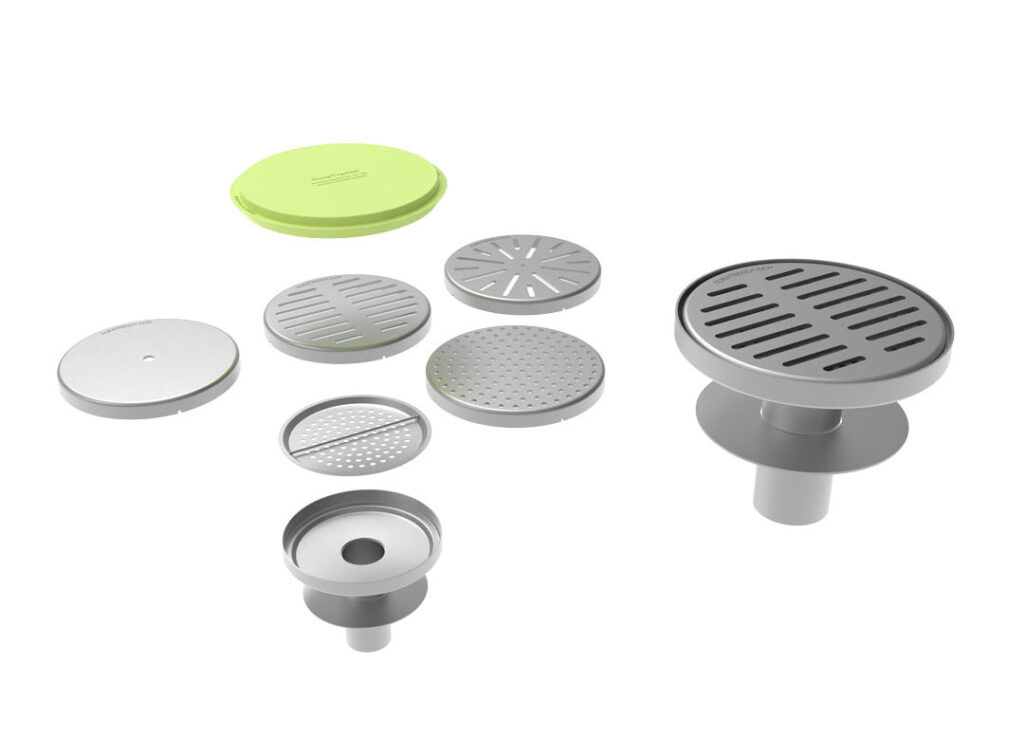Trench drains are required for the cleaning of kennels & cages to maintain a clean environment for both humans and animals. An intelligently designed kennel will provide many years of service without prematurely wearing out, avoiding costly renovations in the near future.
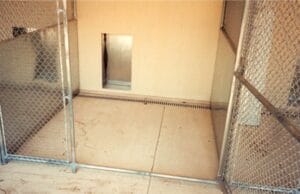
Considerations for the Trench Drain Placement & Layout in a Kennel:
Typically, trench drains are placed at either the front or the back of the kennels. When planning the layout of your kennel space, we recommend placing the trench drain at the back of the kennel for practical, safety, and efficiency reasons. When trench drains are placed at the front of the kennel, to clean it, the staff member must walk through animal waste while simultaneously pulling a water hose through the same conditions. Then, as the water is sprayed from the hose to push the waste toward the front of the kennel, the waste becomes splattered onto the hose, walls, and into the walkway. By putting the trench drain at the back of the kennel, the cleaning staff can safely and efficiently wash animal waste down to the trench drain, limiting areas of over-spray. Once the kennel cleaning is complete, the staff member can then continue to the next kennel by simply rolling their cleaning supplies and hosing down the aisle.
If possible, place the trench drain behind the kennel walls to eliminate grating concerns. Slope the trench drain runs in one direction at a minimum slope of .5% as it simplifies the flushing system and the cleaning of the trench drain. In a long room with multiple side-by-side kennels, it is best to break up the trench runs so that the trench system does not get too deep. Creating straight runs of trench drains will allow solid waste from getting caught at intersections and turns, reducing the possibility of a clogged line. If a tee section must be used, be sure that the invert of the channel entering the “trunk” line is higher than the invert of the “trunk” line by the height of the radius of the bottom of the trench to avoid complications with the fabrication and installation.
Considerations for Trench Drain & Outlet Pipe Sizing:
For most domestic animal kennel applications, a 4″ clear trench cross section will be sufficient for the hydraulic loading, hair, and fecal matter. However, larger animal enclosures, such as those found in zoos and ranches, will require larger-sized drains and outlet pipes. In both applications, avoid using 2” outlet pipes, as solid waste cannot easily pass through the pipe, clogging the entire system.
Considerations for Trench Drain Channel Body Materials:
There are several types of materials used in trench drains, including concrete, plastic, glass fiber-reinforced polymer, vinyl ester glass fiber-reinforced polymer, and stainless steel. When considering which of these materials would work best in a kennel application, choose the materials that are most resistant to the continuous exposure of animal urine, which can be highly corrosive. Let’s explore the options.
Concrete: Concrete is porous and as such will absorb corrosive urine and moisture, causing the concrete to degrade and erode prematurely. These erosive effects can be limited with an epoxy coating, but the trench drain will still be susceptible to premature erosion due to the wastewater being able to pool in the irregular areas of the concrete’s surface. Premature erosion occurs when wastewater continues to sit on an area for a prolonged period. Hand-formed concrete channels are considered the most affordable option, which is the primary reason it remains popular. However, it isn’t ideal and can lead to costly repairs.
Plastic: Molded plastic channels are cheaply made and not ideal for long-term use. While they are a better choice for corrosion concerns, molded plastic channels tend to crack as they age, resulting in leaks and costly renovations sooner, rather than many years down the road.
Glass Fiber Reinforced Polymer Concrete (GFRP): This is an excellent choice to use as the channel material as its affordable and easily withstands the corrosive properties of animal waste. Eric’sons Manufacturing makes Dura Trench, a trench drain system that utilizes a GFRP channel body that’s also manufactured to meet your project’s exact specifications, including the width, depth, and slope.
Vinyl Ester Glass Fiber Reinforced Polymer Concrete: This is also an excellent choice for the channel material due to vinyl ester’s superior chemical resistance properties. However, the cost of the material makes it less favorable amongst kennel owners, especially when compared to GFRP as it performs just as well under typical kennel conditions.
Stainless Steel: Channels made of stainless steel will last for many years without failing due to its nonporous properties, superior chemical resistance, and strength. However, despite all the advantages, it can be cost-prohibitive to kennel owners. We still highly recommend stainless steel for kennels due to their overall performance and longevity.
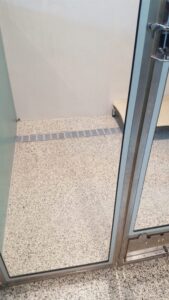
Considerations for the Trench Drain Frame:
The purpose of the frame in most trench drain systems is to provide a place for the cover, usually a grate. In lower-quality systems, the frames are integrated into the body of the channel. In higher quality systems, such as Dura Trench, the frame is a separate entity in which the body of the channel is attached. It then works with the grate to create load distribution by anchoring the system to the surrounding concrete. In animal kennels, trench drain systems can expect to bear no more weight than foot traffic, making light and medium-duty frames a smart choice for kennel applications. Light-duty frames are usually made of plastic, while medium-duty frames are made of stainless steel, carbon steel, and fiberglass. Since a portion of the frame will remain exposed at the floor surface, we recommend selecting systems with plastic, stainless steel, and fiberglass frames. Carbon steel is fine, but will eventually rust, even when galvanized or painted.
Considerations for Cover (Grates) Materials and Design:
If your trench drain layout requires a grate, select a grate that can manage the exposure to the corrosive properties of urine, keeps little animal paws from falling into the trench, and also has an opening large enough to reduce the cleaning frequency and cleaning time. An ADA-style grate in materials such as plastic, stainless steel, and fiberglass will work best in kennel applications.
Other Design Considerations:
During the design and planning stage of your kennel project, there are a few more things to keep in mind.
- Place a flush valve at the shallow end of the trench drain with a wall-mounted valve for flushing the trench. Using this flushing system will help keep the trench drain clean and flowing with minimal maintenance.
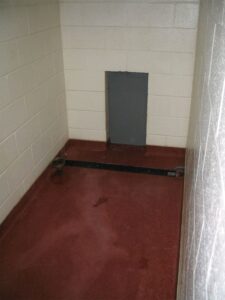
- Trench drains in animal areas should have hair strainers at the outlet to minimize pipe maintenance. For trench drains in a grooming area, consider a larger catch basin with a trash bucket to keep hair from getting into the system.
- Use an outlet pipe with 4″ diameter in areas that will see fecal matter or hair. Smaller-sized pipes clog easily and will require more maintenance.
- When installing trench drains, be sure all the trench drain joints are sealed watertight to protect the surrounding concrete from the odorous and corrosive effects of urine. You can achieve this by installing a trench drain system that comes in long sections and by installing a system that uses a bell and spigot design for joining sections together. You’ll find both features in Dura Trench pre-manufactured trench drains.


